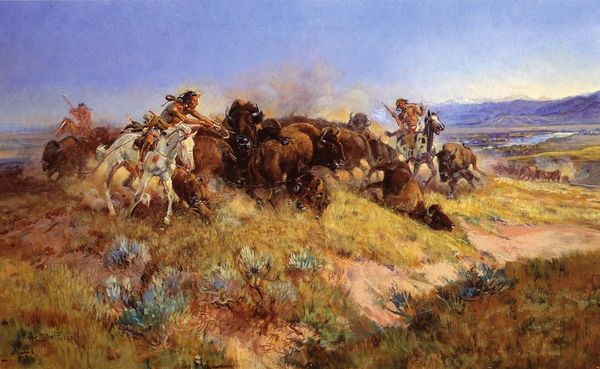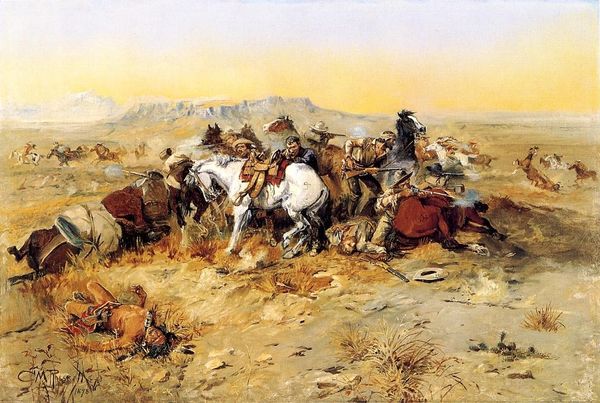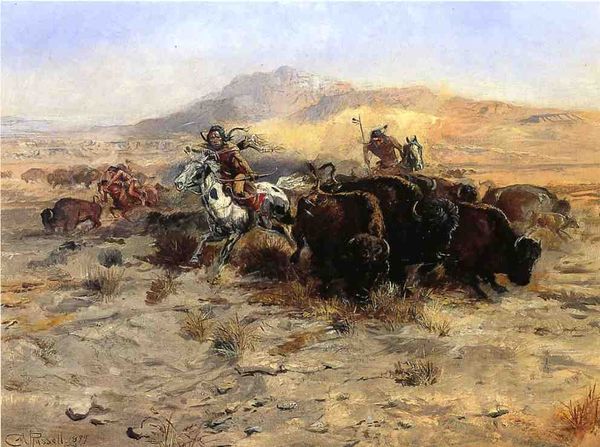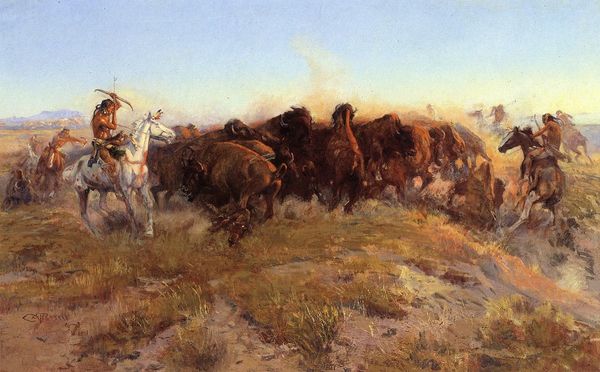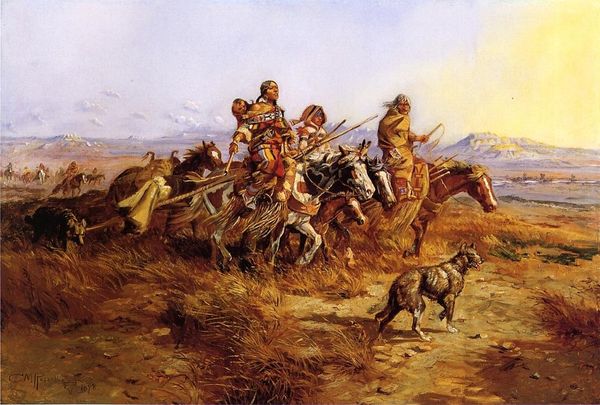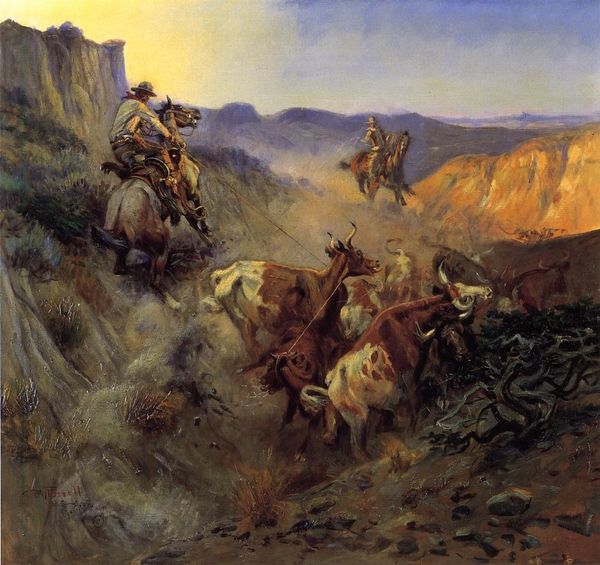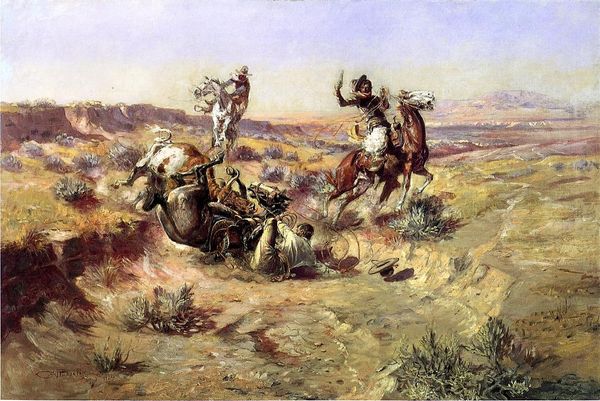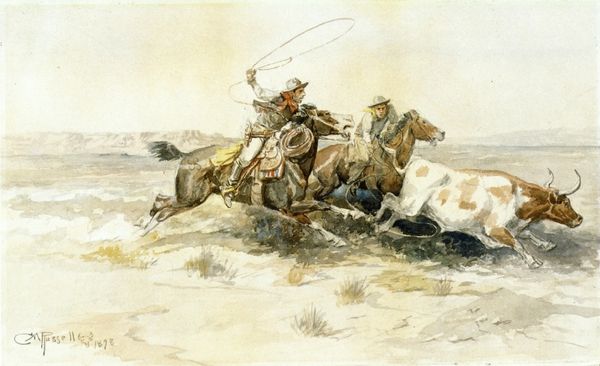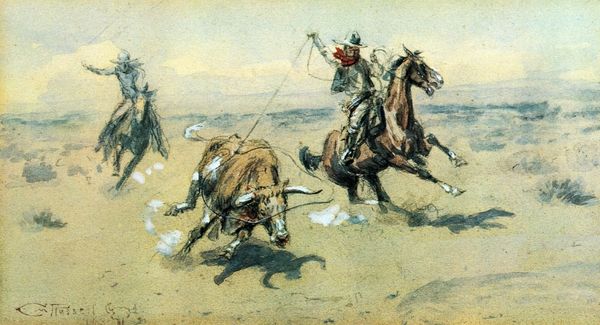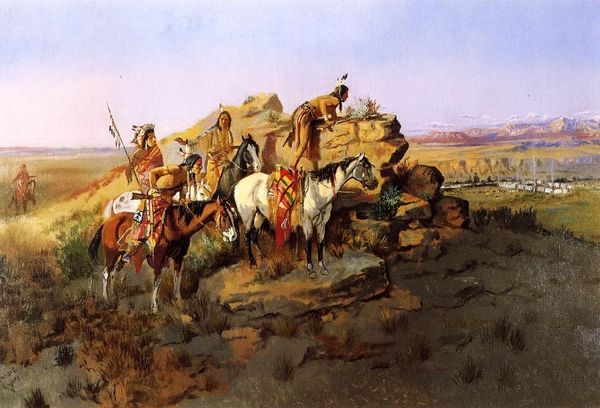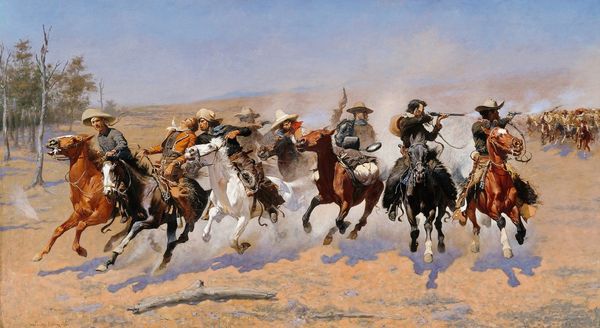
Copyright: Public domain
Editor: So this is "Buffalo Hunt," an oil painting from 1897 by Charles M. Russell. It’s incredibly dynamic, with a real sense of movement and the imminent threat of danger to both buffalo and the Indigenous hunters. What strikes you when you look at this piece? Curator: I’m immediately drawn to the complex narrative it presents. On the surface, it depicts a traditional hunting scene, but we need to unpack the layers of representation and historical context. Russell was painting this as the buffalo populations were decimated, and Indigenous ways of life were under severe pressure from westward expansion. How does the painting engage with those power dynamics, those shifting landscapes of identity and survival? Editor: That's a good point. It almost feels like Russell is romanticizing a moment that was already vanishing. Curator: Precisely. And whose perspective is privileged here? Consider the romanticism of the “vanishing Indian,” a trope used to justify colonization and displacement. The painting participates in a complex dance between celebrating Indigenous culture and, perhaps unintentionally, contributing to its erasure. What tensions do you see between the beauty of the technique and the loaded history it depicts? Editor: I see it in the way Russell idealized the hunter's attire and skill. It’s an exciting scene, but also feels sanitized from the full reality of the colonial violence. Curator: Right. It prompts us to consider the artist's own position, his potential complicity in perpetuating harmful narratives, and our responsibility as viewers to critically examine the artwork's historical and social implications. Can we appreciate the artistic skill while simultaneously acknowledging the problematic undercurrents related to power, representation, and historical accuracy? Editor: It is challenging to separate the artistic value from its social context, but this approach made me think of Russell’s decisions on what to represent, and, more importantly, what *not* to represent. Curator: Exactly. Art offers insights into both its subjects and the society that created it, opening possibilities to challenging hegemonic viewpoints.
Comments
No comments
Be the first to comment and join the conversation on the ultimate creative platform.
